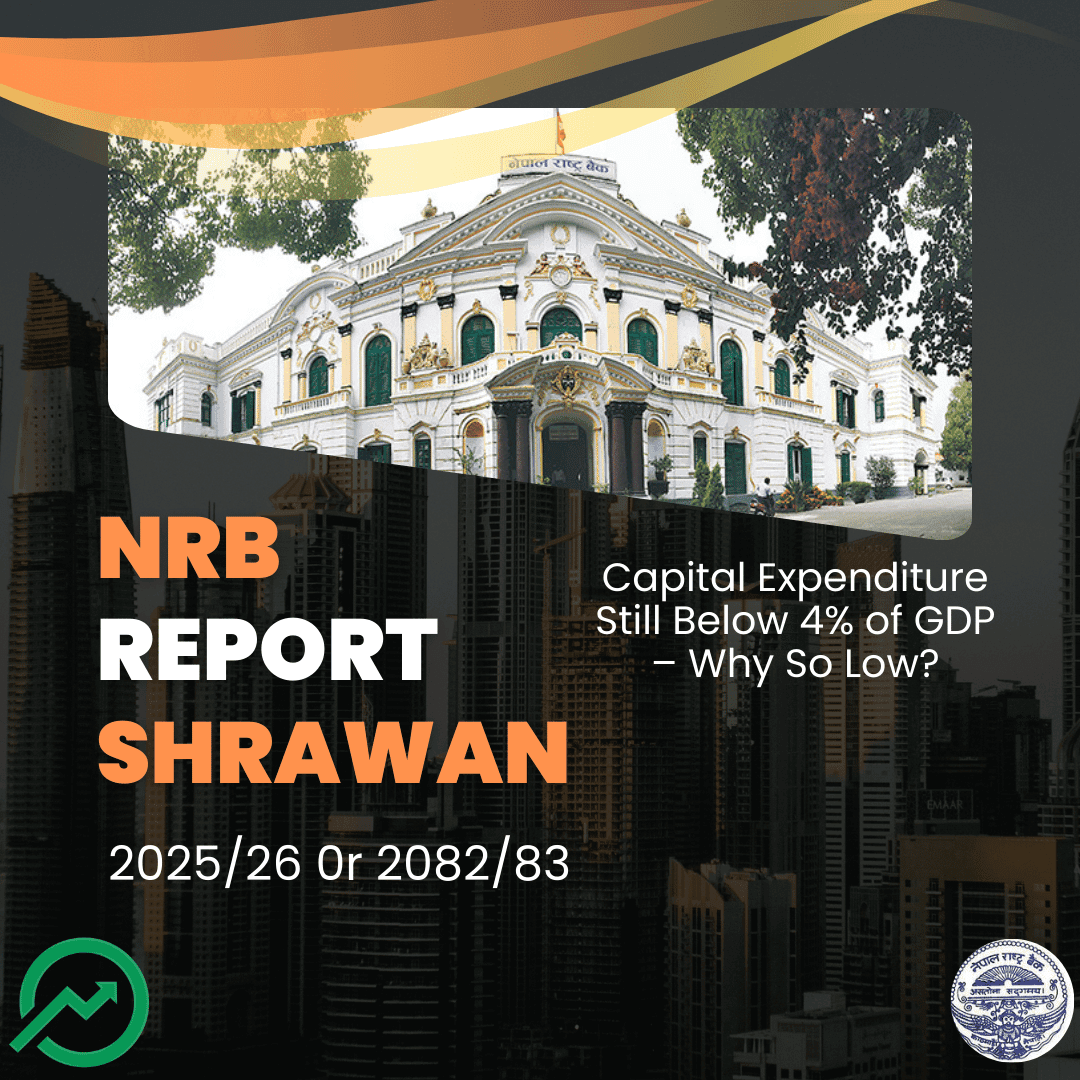By Sandeep Chaudhary
Capital Expenditure Still Below 4% of GDP – Why So Low?

Capital expenditure (CapEx) is critical for driving long-term growth as it funds infrastructure, hydropower, connectivity, and productive assets. Yet, in Nepal, CapEx has remained chronically low, stuck at 3.4% of GDP in FY 2023/24 and only slightly improving to 3.6% in FY 2024/25. This stagnation highlights one of Nepal’s most pressing fiscal weaknesses: the inability to convert budgetary allocations into actual development spending.
Several factors explain why capital expenditure remains so low. First, implementation bottlenecks are a persistent problem. Development projects are often delayed due to bureaucratic red tape, lengthy procurement processes, political instability, and coordination failures between federal, provincial, and local governments. Even when funds are allocated, they are often not disbursed on time, resulting in underutilization.
Second, institutional inefficiency and governance issues reduce the effectiveness of spending. Project delays, cost overruns, and weak monitoring mean that the return on investment is often much lower than expected. As a result, policymakers are reluctant to scale up projects quickly, fearing wastage of funds.
Third, fiscal pressures from recurrent spending crowd out resources for capital projects. With recurrent expenditure absorbing over 16% of GDP in FY 2024/25—covering salaries, pensions, subsidies, and interest payments—very little fiscal space is left for development spending. Even when Nepal borrows externally or domestically, a large share of the borrowing is used to finance recurrent costs rather than building long-term assets.
The consequences of low capital expenditure are severe. Nepal lags in infrastructure quality, industrial development, and productivity gains. Job creation remains weak, forcing millions into foreign labor markets, which in turn reinforces the remittance-dependent growth model. Without raising CapEx above 5–6% of GDP, Nepal risks missing opportunities to leverage its resources—such as hydropower, tourism, and digital services—for structural transformation.
The way forward requires institutional reforms: streamlining procurement, improving project management capacity, empowering provincial and local governments with accountability mechanisms, and ensuring that borrowed funds are strictly tied to productive, high-multiplier projects. Only then can capital expenditure become a driver of growth rather than a chronic fiscal weakness.









